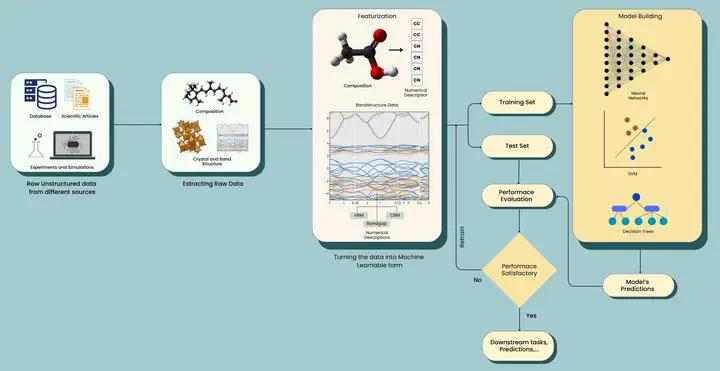Materials Discovery using Machine Learning

By capitalizing on the advantages of both the DFT and the MC method, MAVENs accelerates and improves material discovery through the application of machine learning (ML). Despite the provision of precise electronic structure data by DFT, the prohibitive computational expense impedes extensive material investigation. MC simulations are remarkable for examining large configuration spaces, except from the limitation imposed by the configuration space’s size. By incorporating ML into this framework, a material discovery pipeline that is both robust and efficient is established.
ML models acquire knowledge of the intricate correlations that exist among material structure, composition, and properties via DFT calculations. This knowledge empowers them to forecast the properties of unobserved materials with remarkable precision. Using this method, we can effectively test the most theoretically promising materials found through the extensive MC simulations. This lets us focus our next high-fidelity DFT and MC calculations on those materials.
Hence, by employing this integrated methodology, one can effectively and harmoniously traverse the extensive domain of prospective materials while expediting the identification of materials possessing specific functionalities.